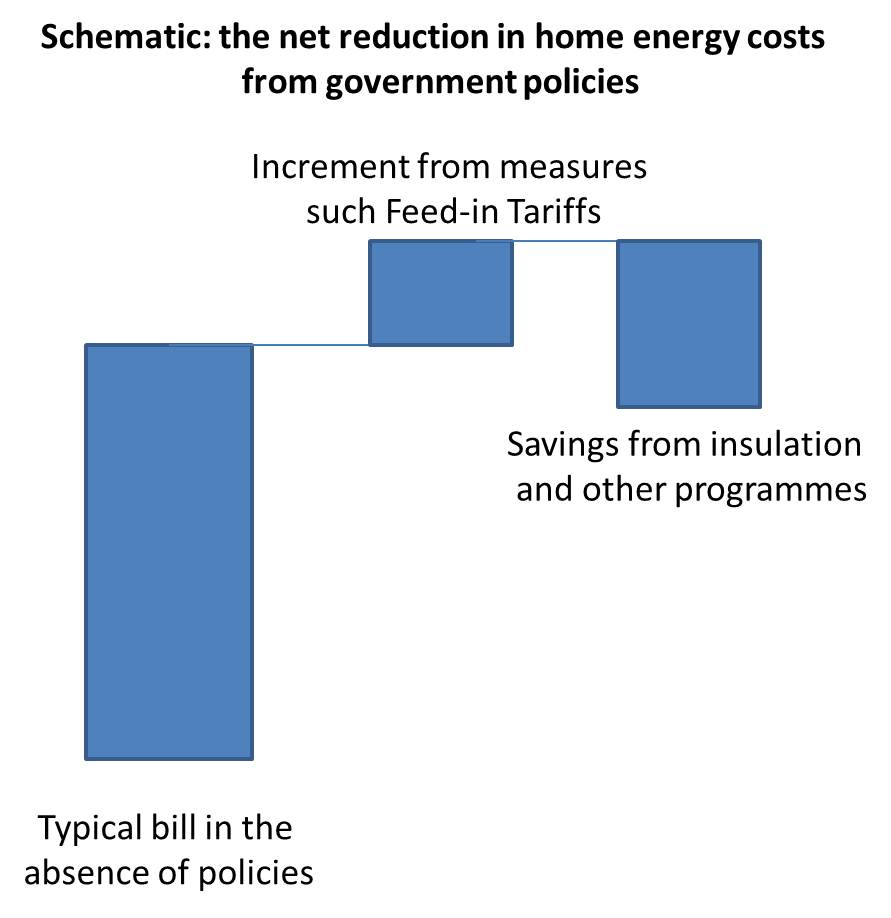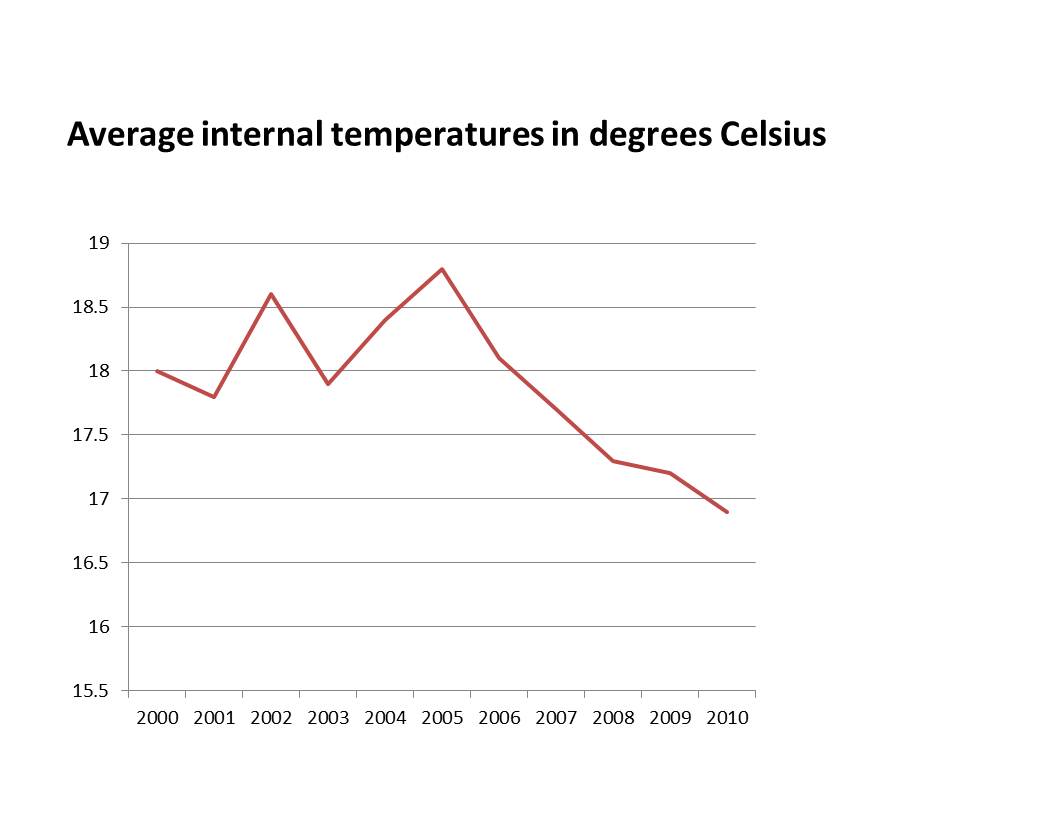No net savings from energy policies
The government says its policies are saving householders’ money on their energy bills. Although subsidies for lower carbon generation increase costs, DECC contends that its energy efficiency schemes have outweighed the impact. It says that gas bills have been held down by improvements in home insulation and better boilers. However the government ignored the evidence that homes are heated to lower temperatures than they were a decade ago. The apparent savings in gas bills are driven as much by lower thermostats as improved efficiency. As retail energy prices rise, policy makers are under increasing pressure to show that financial support for low carbon generation and other measures aren’t the driving force behind the cost increases faced by householders. Their case is that wholesale price changes, particularly of gas, are driving the inflation in home energy costs. They’re right: wholesale gas prices a decade ago were a third of what they were in 2004 while low-carbon support schemes have added less than 10% to retail energy costs.
Over the last few years, DECC has wanted to make a second, and much stronger, claim. It has repeatedly asserted that by 2013, the net impact of government policies would be to reduce average home energy costs. The impact of costs imposed on the consumer would be less than the benefits of other policy interventions. On 27th March, the government duly announced that this aim had been achieved. (This is expressed schematically below). Energy bills in 2013 will be 5% lower than they would have been without any form of government intervention. Simplified to the greatest possible extent, DECC says that this year’s bill additions will be outweighed by the benefit of past subsidised home insulation (about 50%), regulations that obliged central heating engineers to install better boilers (about 30%) and more energy efficient electrical appliances (20%).
Importantly, the calculations seem to assume that all gas bill reductions are due to better insulation of the home or improved boilers. Without this claim, the government’s assertions that policies have cut overall costs to householders are hollow.
In fact, rising gas prices have obliged many householders to run their heating at much lower temperatures than before. The following chart is drawn from information provided in another DECC document.[1] After wobbling around 18-18.5 degrees centigrade for the early years of the last decade, having previously consistently risen since 1970, internal home temperatures have declined every year since 2005, approximately the moment gas bills started to rise sharply. This is what we’d expect: homeowners are reacting to the increased cost of energy by reducing their use. (Very unfortunately, of course, this has also had the effect of causing cold-related illnesses and deaths).
The information in this chart isn’t measured directly but is estimated from other research. It may or may not be accurate but the point is that the numbers are DECC’s own figures, which it choose to exclude from its own analysis of bill savings. I’m saying that it should have incorporated the impact and reduced its estimate of savings from insulation and other programmes.
One recent academic study went so far as to suggest that all the observed recent reductions in gas use are entirely due to increasing prices. None are actually the result of government sponsorship of cavity wall insulation programmes, more efficient boilers or thicker levels of loft insulation.
This seems unlikely to me. Gas use in homes, adjusted to reflect annual variations in outside temperatures, has fallen about 20% since 2005. Household heating (expressed as the average difference between internal and external temperatures in homes) has only fallen by about 10%. So, by implication, efficiency measures have (very roughly) saved about 10% of all domestic gas use. A decent improvement but not enough for DECC to correctly claim that the net effect of policies has been to reduce energy costs to below where they would have been. My guess is that instead of saving 5% of costs, the net impact of policies has been to raise bills by between 1 and 2%. Consumer welfare has also seriously suffered as homeowners have run their houses at lower than desired temperatures.

